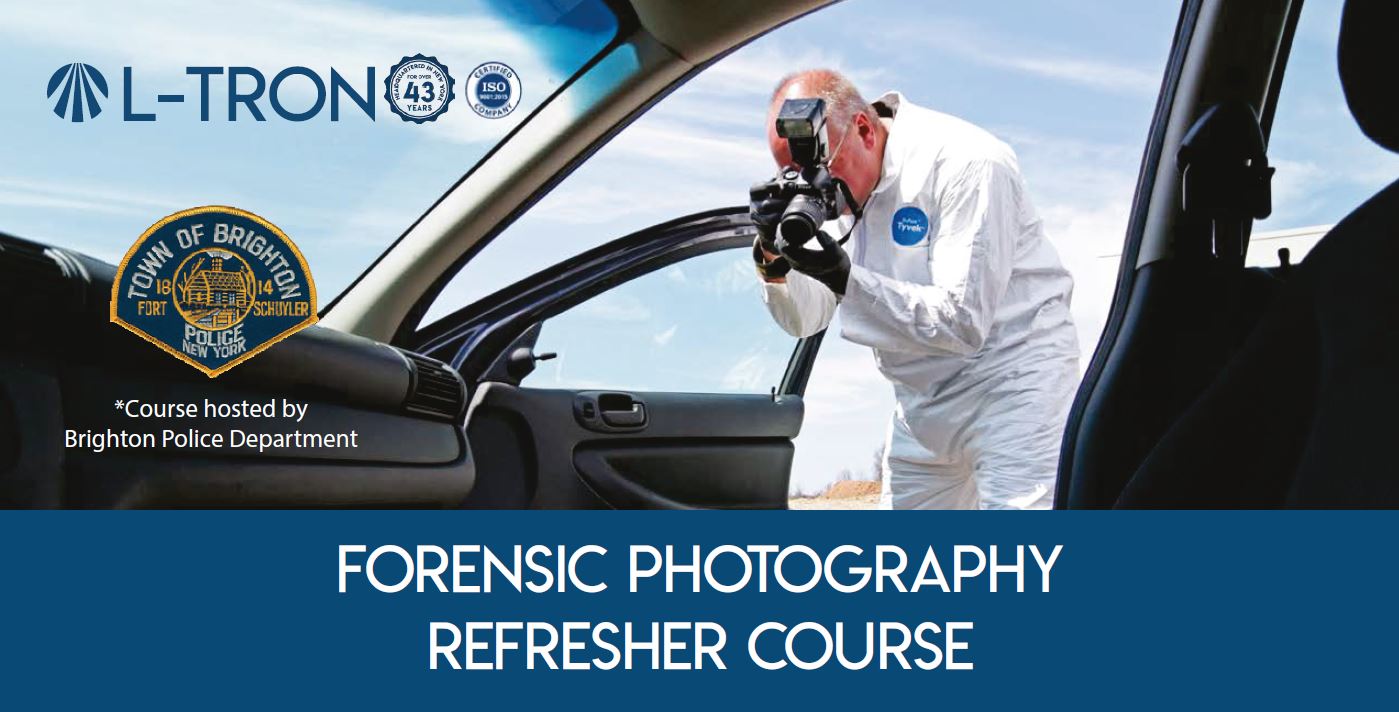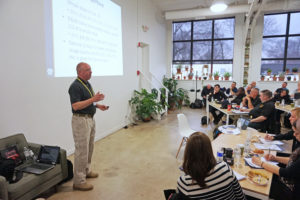That little green AUTO icon on your camera is forensic evil.
If you’re a crime scene technician, you’ve heard this for years; yet you admit you didn’t listen. Human nature took over. Blame your ancestors if you wish. Laziness is a trait left over from our ancestors’ need to conserve energy to hunt.
We can rebuild you.
L-Tron Corporation is offering its second Forensic Photo Refresher Course on Thursday, December 6th at Brighton Fire Department Headquarters. And you’ll find a familiar face there – retired Monroe County Sheriff’s Deputy Andrew McNeill, now L-Tron’s Director of Forensic Education.
“There’s an over reliance on the engineering within the consumer-grade cameras most police departments use for their crime scene work,” Andy says. “There’s no nice way to say this, but there’s no room for laziness when it comes to photographing crime scenes and the evidence they contain.”
His message hasn’t changed. AUTO mode is not forensically sound. Relying on predetermined program settings designed for tourists and family photographers is not capturing a true and accurate image. If you’re a crime scene technician currently using AUTO mode for your crime scene work, be forewarned (again) it may bite you in the courtroom. And it’s becoming more likely.
Here’s why.
Forensic and criminal justice leaders at state and federal levels continue to raise standards in our nation’s crime labs with the assistance of private professional organizations like the American Society of Crime Laboratory Directors (ASCLD). By default, those standards trickle down to police department crime scene units. It’s only a matter of time before those standards and “best practice” recommendations dictate how you do your job.
And that’s a good thing.
But very simply, if your forensic practices, (like capturing “true and accurate” images of evidence) aren’t up to standard, you and your work and your agency will be discredited. Publicly.
Nobody (except criminals and their attorneys) wants that.
In a digital age in which law enforcement lags behind the criminals, don’t think for a moment something a simple as data in a photograph, how you captured it, and your professional practices and reputation won’t be attacked in a courtroom. Or by other forensic professionals. For example …
I once supervised the processing of a homicide scene where images of the suspect’s footprints were critical to linking him to the location. My senior crime scene technician appeared to have things under control, until I noticed him photographing the footprints without a tripod. I retrieved a tripod from his tech truck and handed it to him with a reminder to use it.
Mind you, this was the SENIOR crime scene technician; the one with the most experience. Typically, he held himself to the highest forensic standards. But sometimes the job, the case, the scene, life … all get in the way. For whatever reason, once I was out of sight, he continued to shortcut the proper process and not use the tripod.
I would find this out later. Days later. At an evidence triage meeting with the crime lab personnel responsible for comparing the suspect’s footwear with the footprints. With my boss and case investigators there.
Between camera shake, inaccurate focus, and lack of 90-degree camera position to the evidence, the images were useless for comparison. Embarrassed, I apologized and suffered the dirty looks, the comments, and ultimately the blame.
The officer absorbed the aftermath – confronting him with my disappointment.
So, what should you focus on, and how can L-Tron Corporation help? Here’s a partial list of what we will cover in the photo refresher course.
- Capturing a true and accurate representation of the crime scene
Dive into what “true and accurate” actually means and review how to get there using your camera in MANUAL mode.
- Metering
Review how your camera reads light and interprets both light and dark areas within a scene.
- Forensic settings
Rediscover how to set up your camera in advance so when the pressure is on, you can be confident you are capturing images properly.
- Controlling flash
Add light to your images to properly expose portions of a scene, or specific items of evidence so details aren’t missed.
- Scene procedures
Review basic principles of crime scene processing and how they integrate with photography.
- Special considerations
Examine the specific photographic demands of particular types of crimes both at the scene and in post-incident processing.
- Spherical imaging
Discover how the OSCR360 spherical camera captures crime scenes completely, enhances your workflow and organizes digital evidence for investigation and courtroom presentation.
It’s not too late to sign up. Any Crime Scene Technician or Law Enforcement Officer can register here.

